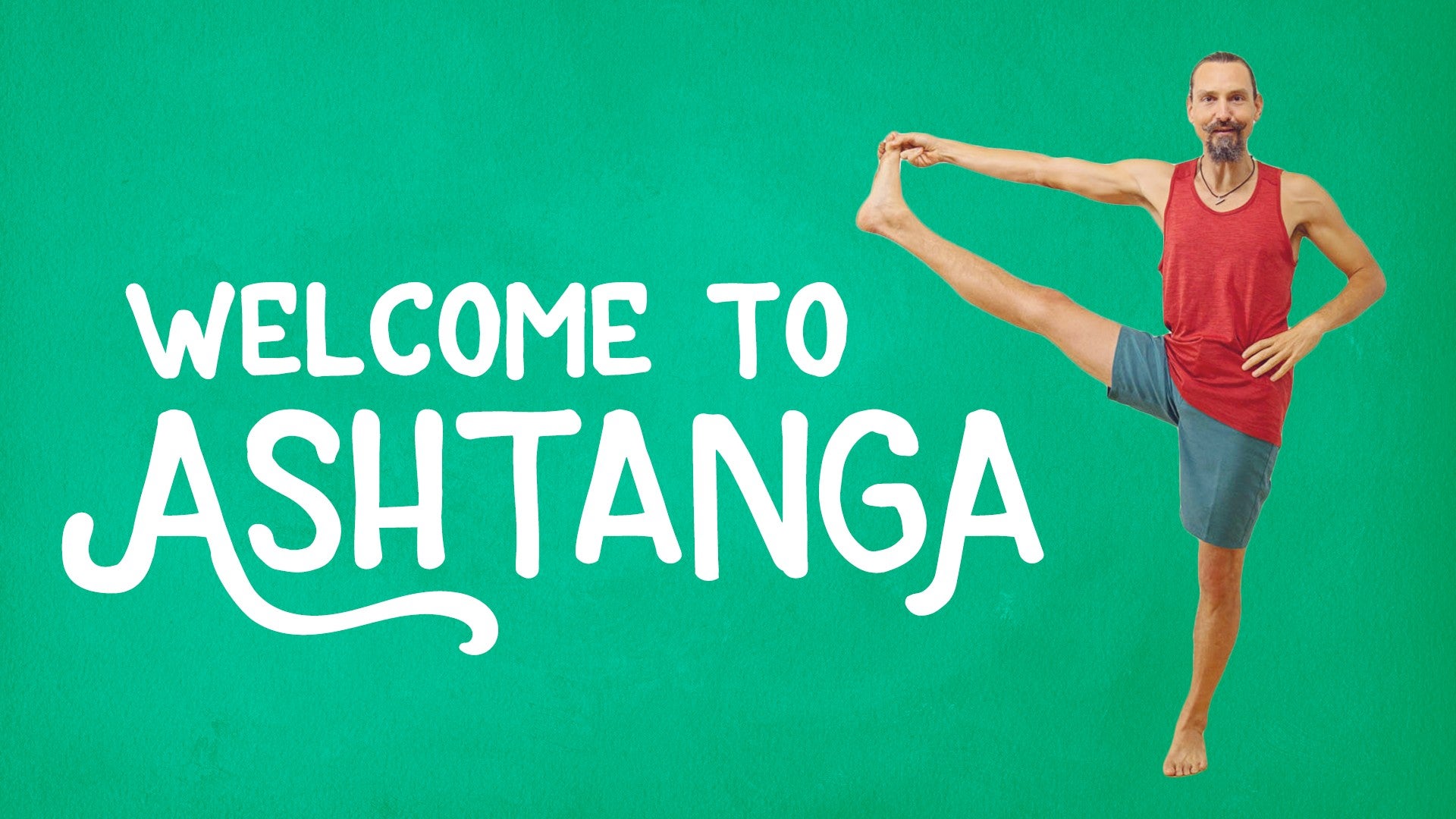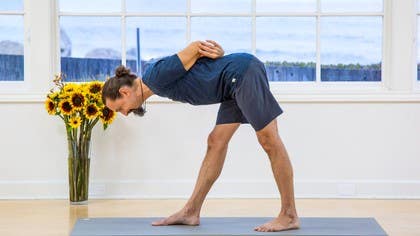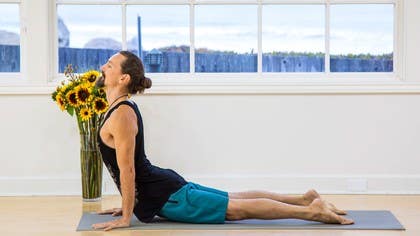Description
About This Video
Transcript
Read Full Transcript
So what is Ashtanga? It's a question I get asked from time to time. Certainly Ashtanga is a traditional yoga practice. Like all traditional yogas, it's going to be an inward journey where you'll have some kind of internal experience that will give you some information about your own process and your own being. So that's very individualized from person to person. We can say what it's not, it's certainly not just a series of postures jumping around or trying to stretch and bend. At the same time there's a physical form that is a set series of poses linked together by a set series of breaths. So as we all continue on this path doing a daily practice, coming back to the same series again and again and again, doing the exact same series, trying to refine it so that it's exactly on the breath count, our mind is freed up. So we no longer need to question what pose is next. We no longer need to think so much about alignment details because we've practiced so much. Our understanding of posture and transition is so refined that the mind can really enter into a more still place. So with daily practice we approach stillness of the mind and that's reflected through the entire method and through the entire technique of our Stanga as we find stillness at the very core, even reflected through the physical being, stillness at the core of our abdomen and pelvic floor, finding mula and udiyana bandha and being able to really focus and hear the sound of our breath is part of the technique. So what is our Stanga? Our Stanga is a breathing technique that guides you from posture to posture, a set series of poses linked together by a set series of breaths to be practiced daily, regularly, again and again and again, for the repetition is what will give us the great benefit and the deepening developing awareness that is offered to us by our Stanga. So the way that we engage in this traditional practice is built around a traditional method which originates from the city of Mysore or currently Mysuru because we've changed the name of the town. So in South India there is a traditional way of learning yoga. It's not always practiced in a led class where someone's telling you what's next but instead the practitioner is encouraged to remember the sequence and to be able to practice at his or her own pace, practicing at her or his own breath count. So in that way you know that the next inhale leads you from this pose to the next. The next exhale leads you from this pose to the next. Now we may do some of the same postures like sometimes it's called triangle pose or in Sanskrit Trikonasana. That comes up a lot for a lot of people in their daily practice but in our Stanga practice we're looking at specifically how do you enter that pose? Where do your eyes go? Take your time and breathe there. How do you exit that pose? So the breath is guiding us through the practice and being able to practice on your own here or in a hotel room, at home, in a class with other students who are all practicing at their own pace. That's being able to practice what we call Mysore style and so that's a key element that I hope you take on and build through your daily Ashtanga practice. Of course going to led class and experiencing when someone's telling you which pose is next, even counting in Sanskrit, which number of breath will lead you from posture to posture, that led class experience can really help you refine and understand the transitions, really help you understand what we consider the vinyasa, how you move from posture to posture, so that when you practice on your own breath count you're developing understanding it's more and more refined. So being able to do both, both practice on your own Mysore style and being able to practice in a led class format will help you succeed and find a great stability in your daily Ashtanga practice. So I'm really happy that you have this ability and this opportunity to be able to check in with me anytime, anywhere that you want to and get some instruction and some leading in guidance on how you can practice Ashtanga. So you'll already be developing a home-based practice being led along through this series of postures exactly as it's taught in Mysore, exactly as it's counted on the breath and I encourage you to remember this practice is for everyone. Anyone can do this practice, it doesn't need to be particularly deep or flashy, you don't need to jump around, all you need to be able to do is notice your breathing and everyone can do that once they put their mind to it. So this practice certainly is for you. I encourage you and hope that you have great, great, great, great, great feelings on your Ashtanga journey.
Welcome to Ashtanga
Comments
You need to be a subscriber to post a comment.
Please Log In or Create an Account to start your free trial.













